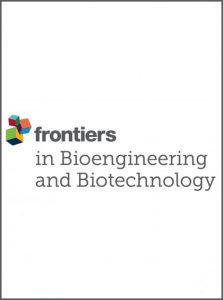Publications

Changes in stiffness of the specific regions of knee extensor mechanism after static stretching
Authors: Yuanchun Zhu 1, Yanan Feng 2, Fangchao Huang 2, Yapeng Li 2, Wenjing Wang 1, Xueqiang Wang 1, Xiangyang Cao 2, Zhijie Zhang 2
Affiliations:
- Department of Sport Rehabilitation, Shanghai University of Sport, Shanghai, China
- Rehabilitation Therapy Center, Luoyang Orthopedic Hospital of Henan Province, Orthopedic Hospital of Henan Province, Luoyang, China
Journal: Frontiers in Bioengineering and Biotechnology - August 2022, Volume 10, Article no. 958242 (DOI: 10.3389/fbioe.2022.958242)
-
Field & Applications:
- Sport
- Treatment evaluation
- Muscle development / Performance
- Warm-up / Recovery
- Injury prevention
Decreased muscle stiffness could reduce musculotendinous injury risk in sports and rehabilitation settings. Static stretching (SS) has been used to increase the flexibility of muscles and reduce muscle stiffness, but the effects of SS on the stiffness of specific regions of the knee extensor mechanism are unclear. The quadriceps femoris and patellar tendon are essential components of the knee extensor mechanism and play an important role in knee motion. Therefore, we explored the acute and prolonged effects of SS on the stiffness of the quadriceps femoris and patellar tendon and knee flexion range of motion (ROM).
Thirty healthy male subjects participated in the study. Three 60-s SS with 30-s intervals were conducted in right knee flexion with 30° hip extension. We measured the ROM and stiffness of the vastus medialis (VM), vastus lateralis (VL), and rectus femoris (RF) and the proximal-(PPT), middle-(MPT), and distal-(DPT) region stiffness of the patellar tendon before and immediately after SS intervention, or 5 and 10 min after SS. The stiffness of the quadriceps muscle and patellar tendon were measured using MyotonPRO, and the knee flexion ROM was evaluated using a medical goniometer.
Our outcomes showed that the ROM was increased after SS intervention in all-time conditions (p < 0.01). Additionally, the results showed that the stiffness of RF (p < 0.01) and PPT (p = 0.03) were decreased immediately after SS intervention.
These results suggested that SS intervention could be useful to increase knee flexion ROM and temporarily reduce the stiffness of specific regions of the knee extensor mechanism.
Keywords: stiffness, knee extensor mechanism, quadriceps, patellar tendon, static stretching, range of motion (ROM)
The results showed that the SS intervention increased the knee flexion ROM, and this change was continued till 10 min after SS; the RF stiffness and PPT stiffness significantly decreased after the SS intervention, whereas this reduction was not sustained till 5 min after SS. It is suggested that SS intervention could be useful to increase ROM and temporarily reduce the stiffness of specific regions of the knee extensor mechanism. However, SS interventions with different stretching intensities and durations for further studies are necessary to investigate whether they effectively prevent injuries related to the quadriceps and patellar tendon.


